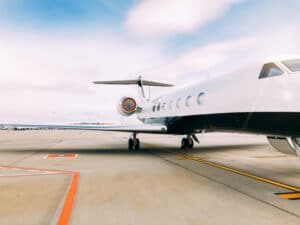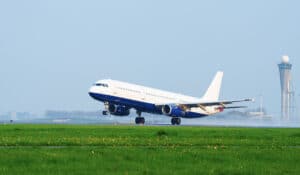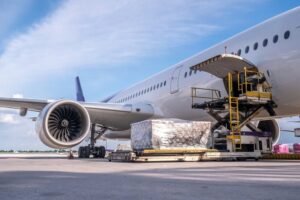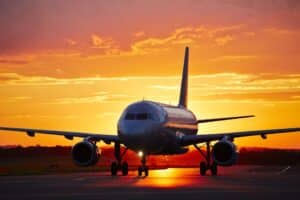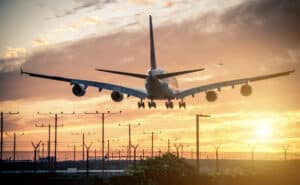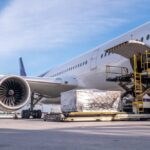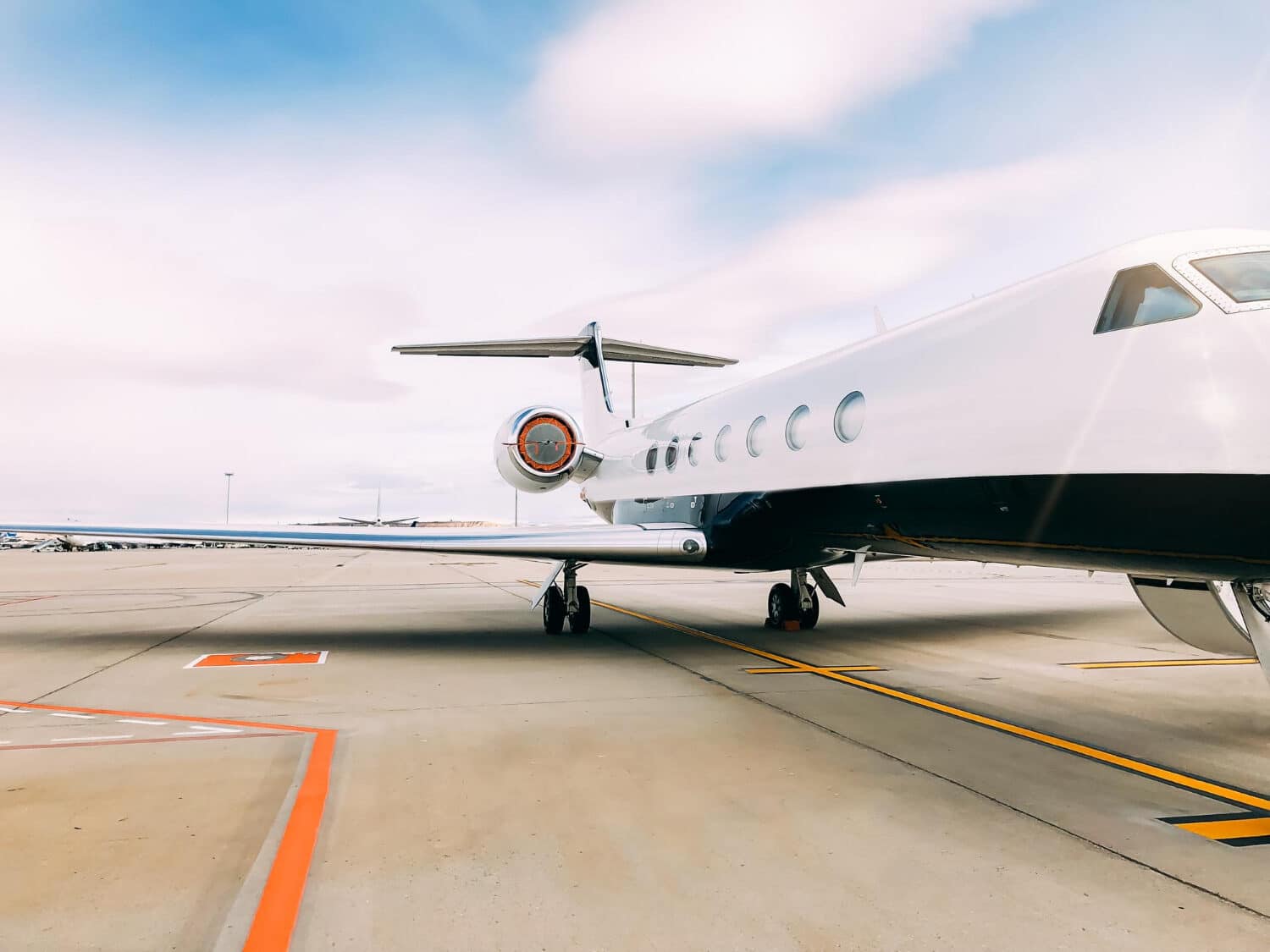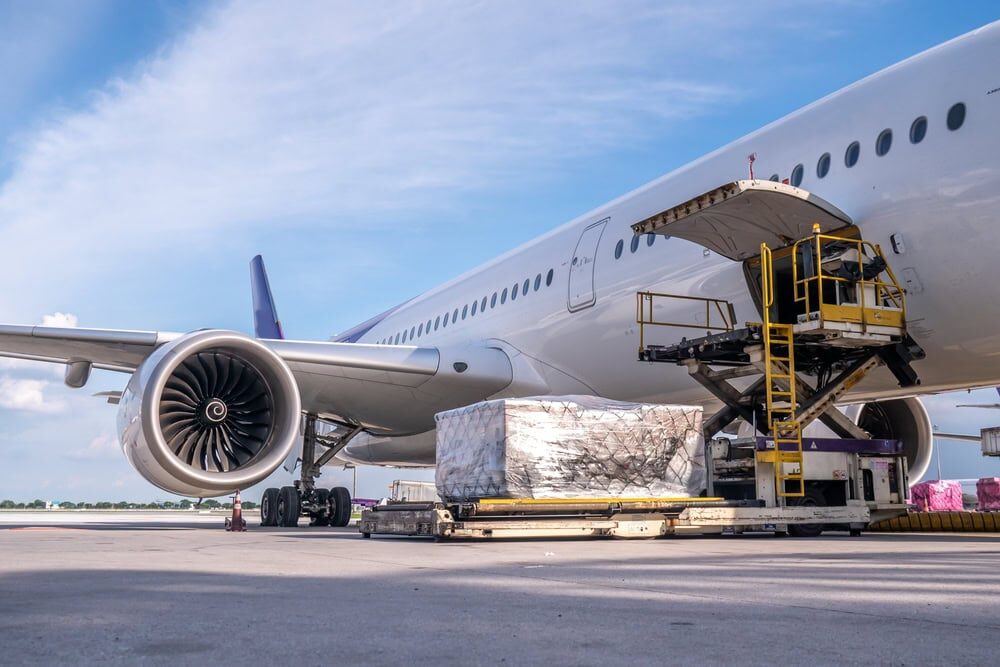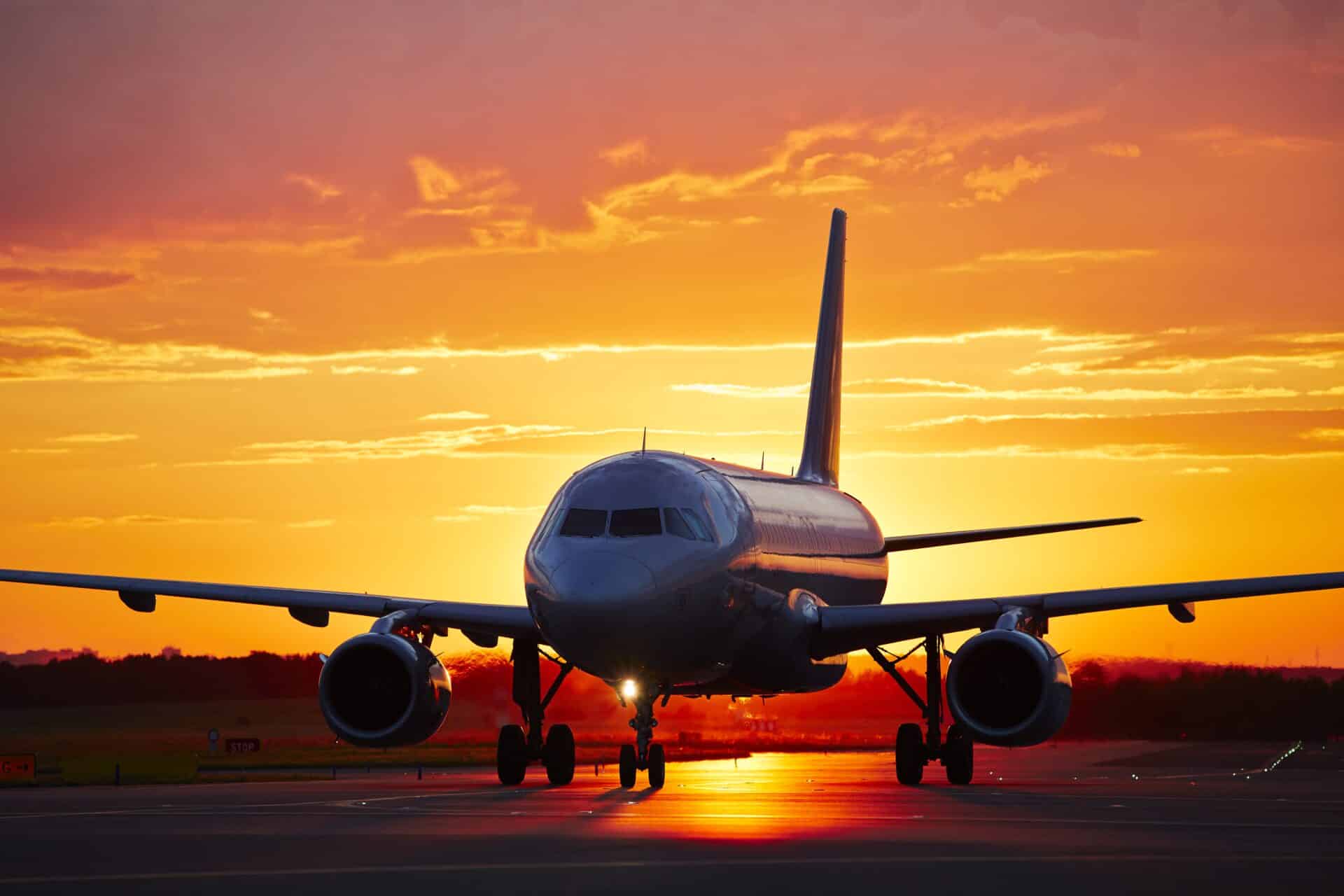Commercial aviation has transformed dramatically since the Wright Brothers‘ first powered flight in 1903. The evolution from propeller-driven aircraft to massive widebody jets has revolutionised global travel, connecting continents and making the world more accessible than ever before.
In this comprehensive guide, we examine the world’s largest passenger aircraft based on typical three-class seating capacity, overall dimensions, and operational significance. These engineering marvels represent the pinnacle of aerospace achievement, combining advanced materials, efficient powerplants, and cutting-edge aerodynamics.
How We Ranked the World’s Largest Passenger Aircraft
Our ranking methodology considers multiple factors to provide a comprehensive assessment of aircraft size and capability. These aircraft serve the world’s busiest airports and most demanding routes.
Seating Capacity
We use typical three-class configurations as the primary metric rather than maximum single-class capacity. This approach reflects real-world airline operations where most carriers configure their aircraft with first, business, and economy cabins.
Overall Dimensions
Fuselage length, wingspan, and maximum takeoff weight (MTOW) provide additional context for comparing aircraft size. These specifications directly influence an aircraft’s payload capability and operational envelope.
Market Relevance
We consider both active production aircraft and legacy types that continue to serve major airlines worldwide, providing a complete picture of the large commercial aircraft landscape.
1. Airbus A380-800 — The Largest Passenger Aircraft Ever Built
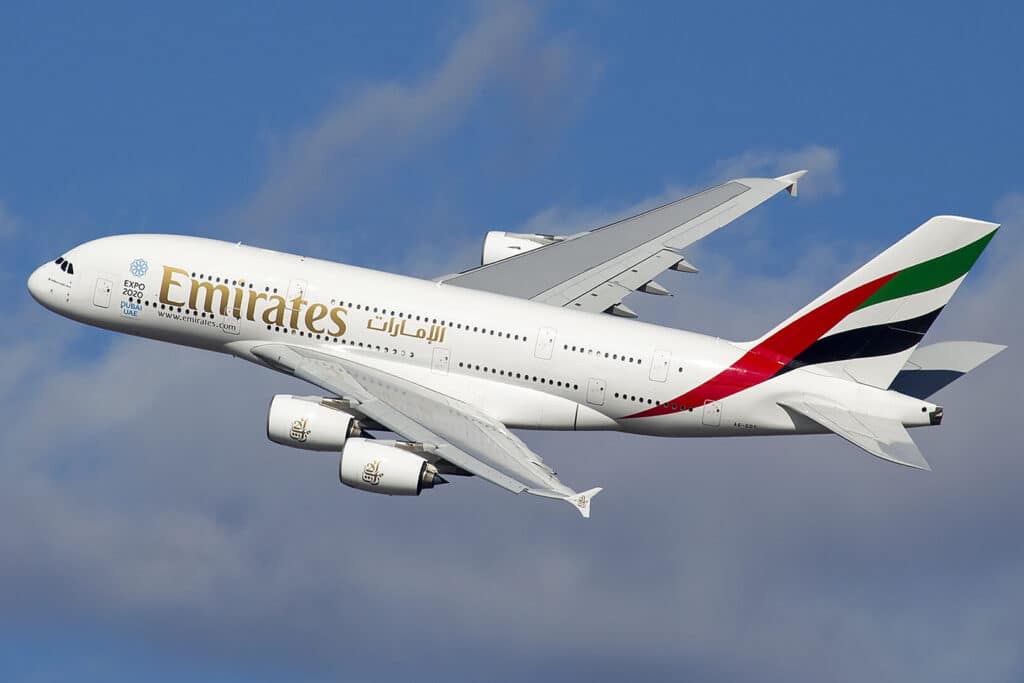
The Airbus A380 remains the undisputed champion of passenger aircraft size. This double-deck, quad-engine giant can accommodate 525 passengers in a typical three-class configuration, with maximum certified capacity reaching an impressive 853 passengers.
Measuring 72.72 metres in length with a wingspan of 79.8 metres, the A380 dominates airport ramps wherever it operates. The aircraft’s MTOW of 560,000 kg reflects its massive size and intercontinental range capability of 8,000 nautical miles.
Despite Airbus ending production in 2021, the A380 continues to serve major carriers including Emirates, Singapore Airlines, and Qantas. The decision to cease production stemmed from changing airline preferences toward smaller, more fuel-efficient twin-engine aircraft rather than any engineering shortcomings.
2. Boeing 747-8 — The Largest Boeing Passenger Aircraft
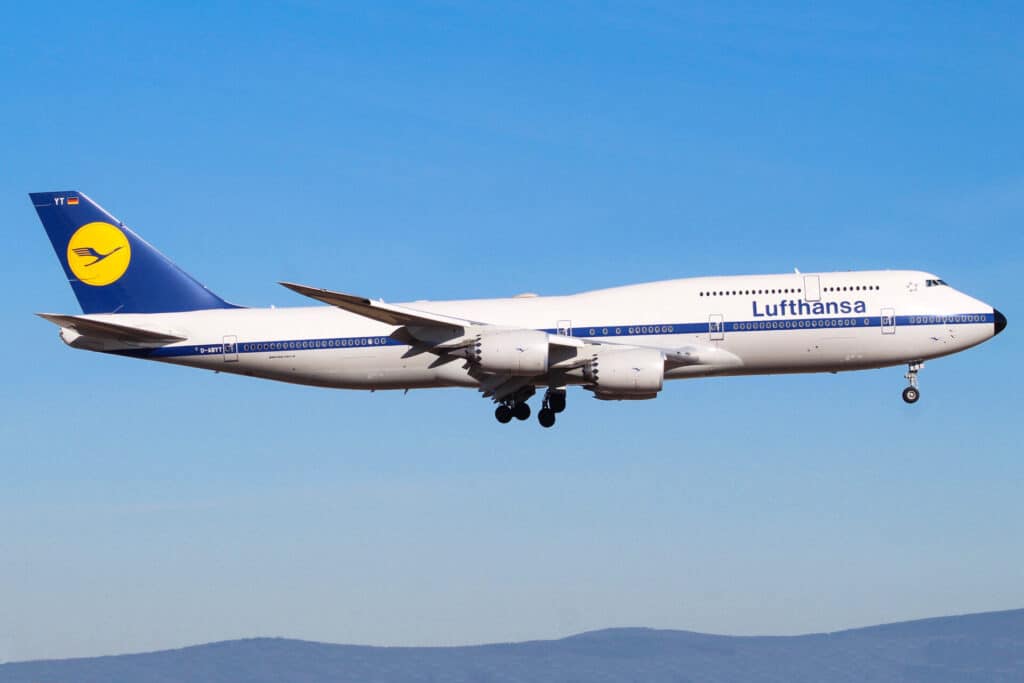
The Boeing 747-8 represents the final evolution of the iconic jumbo jet, stretching the original 747 design to 76.25 metres—making it the world’s longest airliner until the Boeing 777-9 debuts. Built by one of the leading aircraft manufacturers, the 747-8 combines classic design with modern efficiency improvements, offering typical three-class seating for 467 passengers and a wingspan of 68.4 metres.
Powered by four GE GEnx-2B67 turbofan engines, the 747-8 delivers 16% better fuel efficiency compared to its 747-400 predecessor. The aircraft’s MTOW of 447,700 kg supports a range exceeding 7,700 nautical miles, enabling non-stop service on major intercontinental routes.
Boeing delivered the final 747-8 in January 2023, concluding a remarkable 54-year production run for the 747 family. Lufthansa and Korean Air remain primary operators of the passenger variant.
3. Boeing 777-9 — The Newest Giant
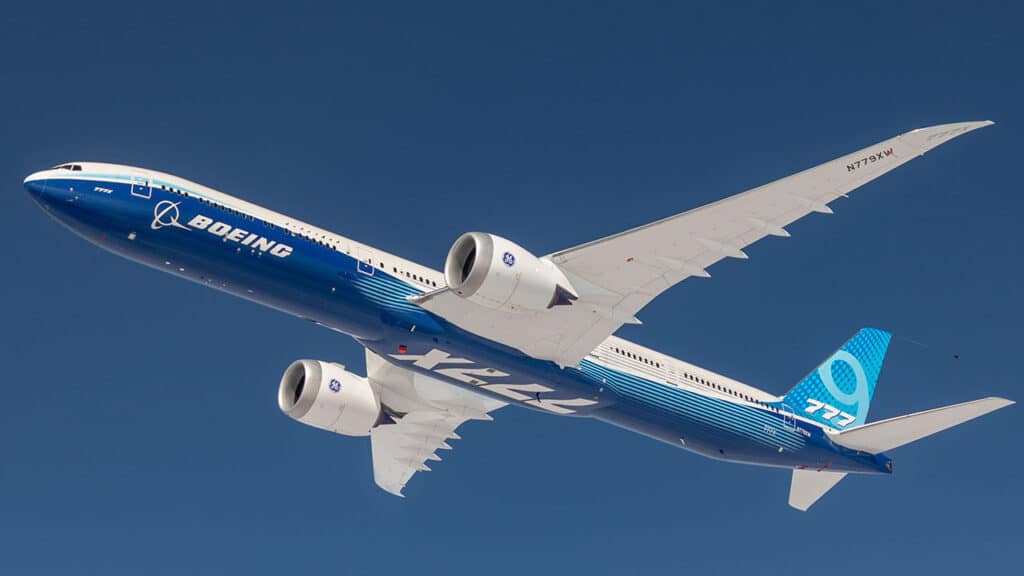
The Boeing 777-9 represents the next generation of large commercial aircraft, featuring a 76.7-metre fuselage length and innovative folding wingtips that allow the aircraft to operate from standard airport gates while maintaining a full wingspan of 71.8 metres for maximum aerodynamic efficiency.
With seating for approximately 400-426 passengers in typical configurations, the 777-9 bridges the gap between current widebodies and the super-jumbo category. The aircraft features advanced GE9X engines—the world’s most powerful commercial jet engines—delivering exceptional fuel efficiency.
Emirates, Lufthansa, and Qatar Airways hold significant orders for the 777-9, positioning it as a key player in long-haul operations for the coming decades. The aircraft is currently completing certification with expected entry into service approaching.
4. Boeing 747-400 — The Queen of the Skies
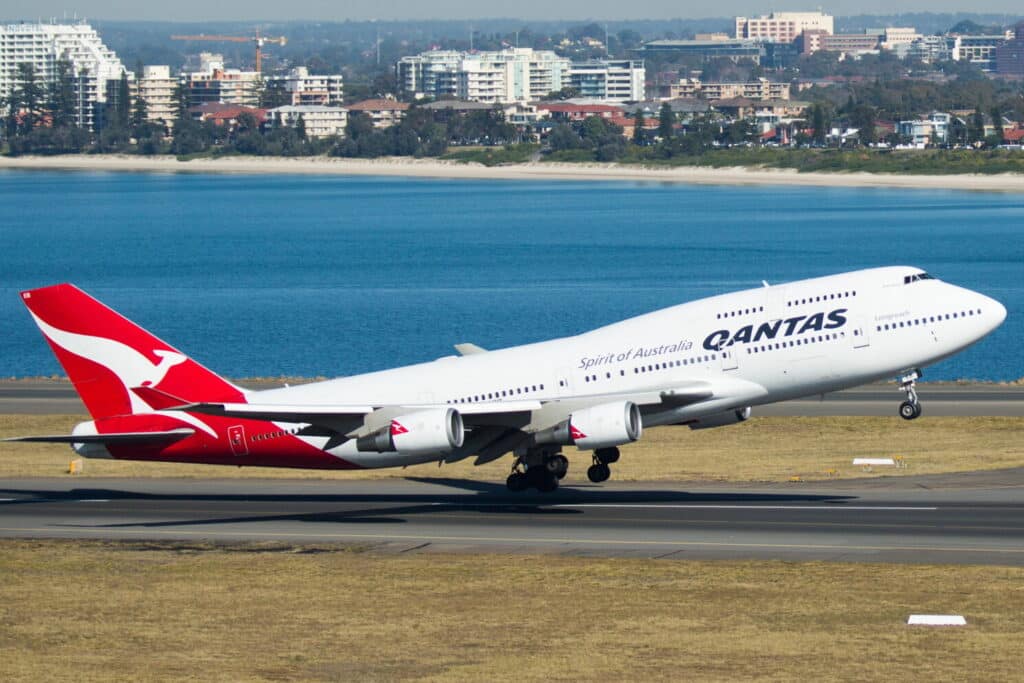
The Boeing 747-400 earned its “Queen of the Skies” nickname through decades of reliable service on the world’s most demanding routes. With typical three-class seating for 416 passengers and a distinctive humpbacked profile, the 747-400 defined long-haul travel for an entire generation, serving the top airlines for business class travel.
Measuring 70.66 metres in length with a 64.44-metre wingspan, the 747-400 pioneered extended range operations with its 7,260-nautical-mile capability. The aircraft’s MTOW of up to 412,775 kg supported both passenger and combi configurations.
While most airlines have retired their 747-400 passenger fleets in favour of more efficient twin-engine aircraft, the type continues to serve in freighter configuration and remains a nostalgic favourite among aviation enthusiasts.
5. Airbus A350-1000 — Longest Airbus Widebody
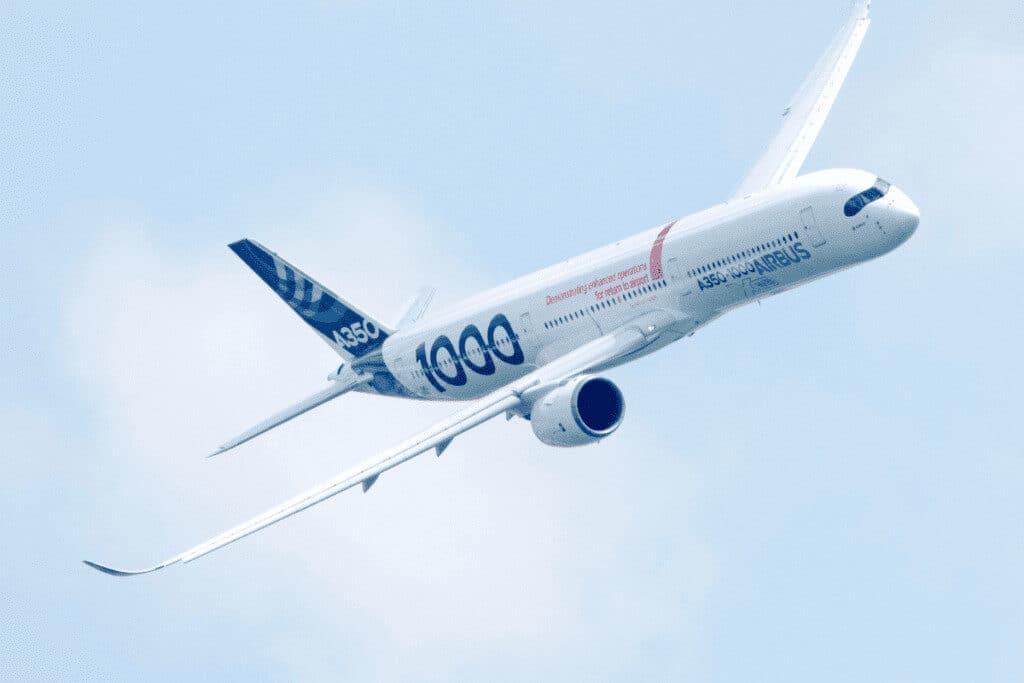
The Airbus A350-1000 combines impressive size with cutting-edge efficiency, accommodating 350-410 passengers across its 73.78-metre fuselage. As the longest variant in the A350 family, this aircraft offers 40% more premium cabin space than the A350-900.
Built with 53% composite materials and powered by Rolls-Royce Trent XWB-97 engines, the A350-1000 delivers exceptional fuel efficiency while maintaining an 8,700-nautical-mile range. The aircraft’s MTOW of 322,000 kg reflects Airbus’s advanced lightweight construction techniques.
Qatar Airways, Cathay Pacific, and British Airways operate the A350-1000 on their flagship routes, appreciating its combination of capacity, range, and operational economics. The aircraft directly competes with the Boeing 787 and 777 families.
6. Boeing 777-300ER

The Boeing 777-300ER has become the workhorse of long-haul aviation, with more than 800 aircraft delivered since its 2004 introduction. Seating up to 396 passengers in typical configurations, the 777-300ER stretches 73.86 metres with a 64.8-metre wingspan.
Powered by GE90-115B engines—the most powerful turbofans certified for commercial use—the 777-300ER achieves a 7,370-nautical-mile range with full passenger loads. The aircraft’s MTOW of 351,530 kg supports robust cargo capacity alongside its passenger mission.
Emirates operates the world’s largest 777 fleet, leveraging the type’s exceptional range and reliability for its global network. The 777-300ER replaced many aging 747-400s while offering approximately 20% better fuel efficiency.
7. Airbus A340-600
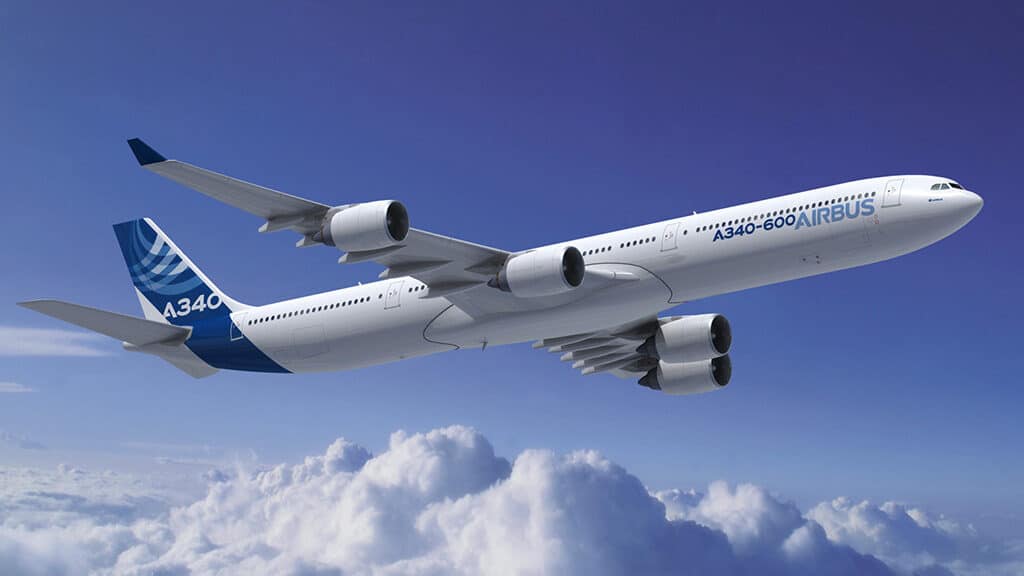
The Airbus A340-600 held the record as the world’s longest airliner upon its 2002 debut, stretching 75.36 metres—longer than both the Boeing 747-400 and even the A380. With seating for 320-370 passengers in three-class layouts, the A340-600 offered significant capacity for its era.
Four Rolls-Royce Trent 556 engines power the aircraft, providing a 13,900-kilometre range capability. The A340-600’s MTOW of 368,000 kg supported intercontinental operations from challenging high-altitude airports where four-engine reliability provided additional safety margins.
Production ceased in 2011 as twin-engine economics proved insurmountable. The 777-300ER offered comparable capacity with approximately 8-9% lower operating costs. Remaining A340-600 operators include Lufthansa and Iberia, though retirement accelerates annually.
8. Airbus A350-900
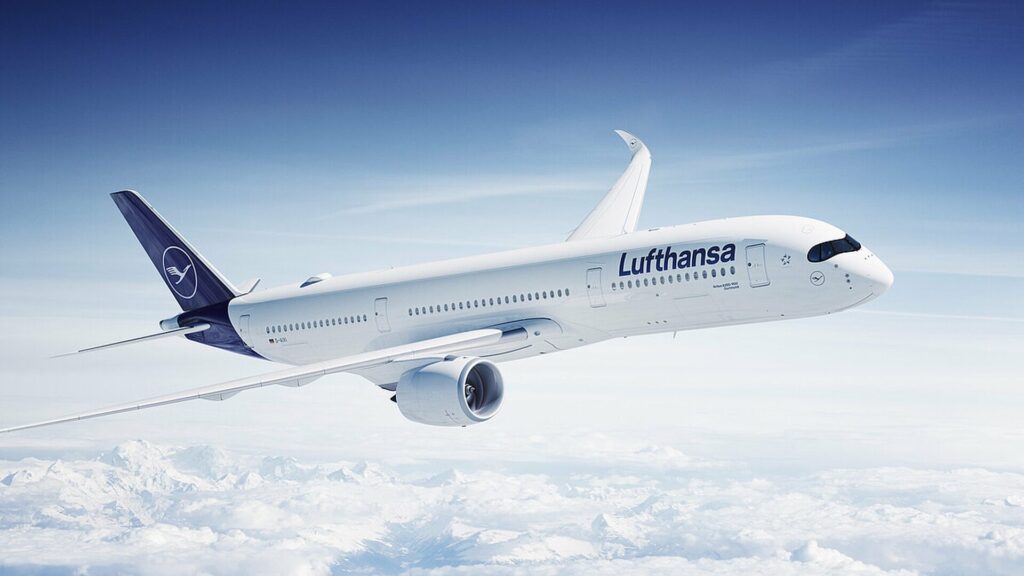
The Airbus A350-900 serves as the baseline for Airbus’s most advanced widebody family, accommodating 300-350 passengers in its 66.8-metre fuselage. The aircraft’s 64.75-metre wingspan incorporates advanced aerodynamic features inherited from the larger A350-1000.
With an MTOW of 283,000 kg, the A350-900 achieves remarkable range of up to 8,500 nautical miles while consuming 25% less fuel than previous-generation aircraft of similar size. The carbon-fibre-reinforced polymer construction contributes to both efficiency and passenger comfort through higher cabin pressurisation.
Singapore Airlines, Delta Air Lines, and Turkish Airlines have embraced the A350-900 as a cornerstone of their long-haul strategies. The type has accumulated over 1,200 orders, establishing itself as one of Airbus’s most successful widebody programmes.
9. Boeing 787-10 Dreamliner
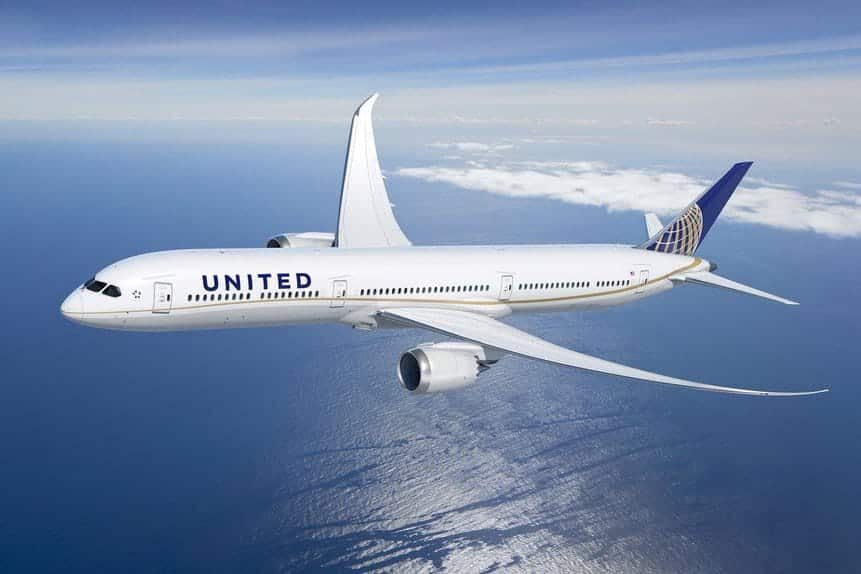
The Boeing 787-10 represents the largest variant in the Dreamliner family, stretching 68.3 metres to accommodate up to 330 passengers in typical two-class configurations. This stretched variant offers 14% more capacity than the popular 787-9.
Built primarily from composite materials, the 787-10 weighs significantly less than traditional aluminium aircraft, contributing to its exceptional fuel efficiency. The aircraft’s MTOW of approximately 254,000 kg supports a range of 6,430 nautical miles—optimised for high-density medium-haul routes.
Singapore Airlines, United Airlines, and Etihad operate the 787-10 on routes where capacity matters more than ultra-long range. The aircraft’s fuel efficiency makes it particularly attractive for environmentally conscious operators.
10. Airbus A340-500
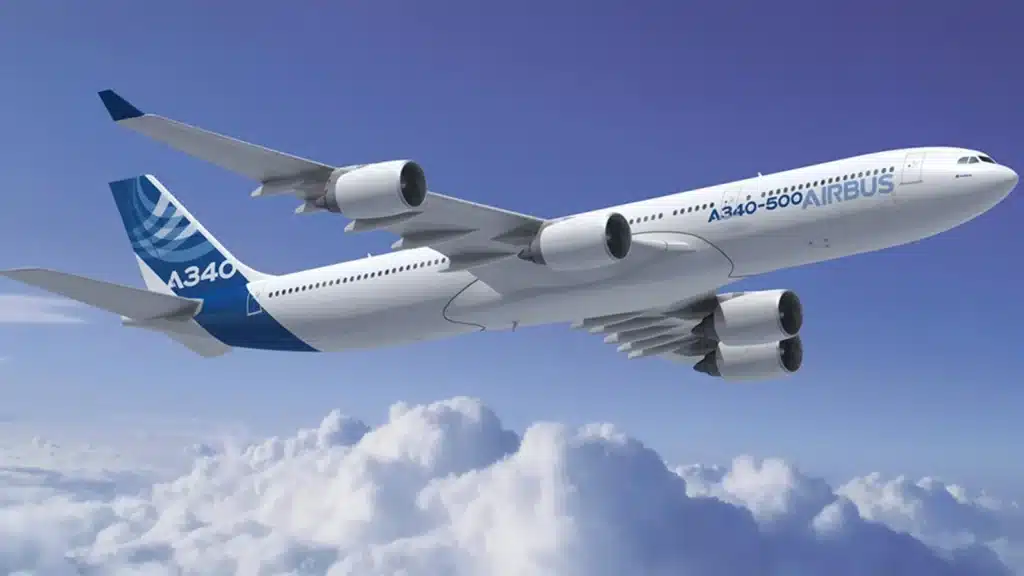
The Airbus A340-500 earned distinction as the world’s longest-range airliner upon its 2002 introduction, capable of flying 9,000 nautical miles non-stop. While seating only 270-310 passengers—relatively modest for this list—the aircraft pioneered ultra-long-haul routes that were previously impossible.
Singapore Airlines operated the A340-500 on the world’s longest commercial flight from Singapore to New York-Newark, covering over 15,000 kilometres. The aircraft’s 67.9-metre length and 63.45-metre wingspan supported its impressive 372,000 kg MTOW.
The A340-500’s limited capacity constrained profitability on most routes, and the type has largely been retired from commercial service. However, its engineering achievements paved the way for today’s ultra-long-range twins like the Airbus A350-900ULR.
Summary Table — Largest Commercial Aircraft (By Seating & Size)
← Scroll horizontally to see all columns →
| Rank | Aircraft | Typical Seating | Max Seating | Length (m) | Wingspan (m) | MTOW (tonnes) | Range (nm) |
|---|---|---|---|---|---|---|---|
| 1 | Airbus A380-800 | 525 | 853 | 72.72 | 79.8 | 560 | 8,000 |
| 2 | Boeing 747-8 | 467 | 605 | 76.25 | 68.4 | 448 | 7,790 |
| 3 | Boeing 777-9 | 400–426 | ~450 | 76.7 | 71.8 | ~352 | 7,285 |
| 4 | Boeing 747-400 | 416 | 524 | 70.66 | 64.44 | 413 | 7,260 |
| 5 | Airbus A350-1000 | 350–410 | 480 | 73.78 | 64.75 | 322 | 8,700 |
| 6 | Boeing 777-300ER | 396 | 440 | 73.86 | 64.8 | 352 | 7,370 |
| 7 | Airbus A340-600 | 320–370 | 475 | 75.36 | 63.45 | 368 | 7,500 |
| 8 | Airbus A350-900 | 300–350 | 440 | 66.8 | 64.75 | 283 | 8,500 |
| 9 | Boeing 787-10 | 330 | 406 | 68.3 | 60.1 | 254 | 6,430 |
| 10 | Airbus A340-500 | 270–310 | 375 | 67.9 | 63.45 | 372 | 9,000 |
Why Airlines Are Phasing Out Large Four-Engine Jets
The aviation industry has witnessed a fundamental shift away from four-engine aircraft toward more efficient twin-engine designs. This transition reflects both technological advancement and economic reality.
Modern twin-engine aircraft like the Boeing 777 and Airbus A350 achieve fuel burn per seat that four-engine types cannot match. The physics are straightforward: two engines produce less drag, weigh less, and require less maintenance than four equivalent powerplants.
Extended-range Twin-engine Operational Performance Standards (ETOPS) regulations have evolved to permit twin-engine aircraft on routes previously requiring four engines. Current ETOPS-370 certification allows twins to fly up to 370 minutes from the nearest diversion airport, opening virtually all commercial routes to two-engine aircraft.
Maintenance economics further favour twins. Each additional engine represents scheduled inspections, potential unscheduled repairs, and spare parts inventory. Airlines operating 777s typically achieve higher dispatch reliability with lower maintenance costs compared to 747 or A340 operations.
Future of Large Passenger Aircraft
The era of super-jumbo aircraft appears to have concluded with the A380, but large widebodies remain essential for connecting major global hubs. The Boeing 777X family represents the current frontier, combining size with unprecedented efficiency. Innovations from electric aircraft development may eventually influence larger aircraft designs.
Sustainable aviation fuel (SAF) adoption will influence future large aircraft design. Current widebodies are certified for SAF blends, and Airbus and Boeing continue developing aircraft optimised for higher SAF percentages and potential hydrogen propulsion. The development of biofuels and synthetic SAFs will play a crucial role in reducing aviation’s environmental impact.
Composite material technology continues advancing, promising lighter airframes and improved fuel efficiency. The A350’s carbon-fibre construction demonstrated viability at scale, and future aircraft will likely expand composite usage further.
Point-to-point travel patterns favour medium-capacity long-range aircraft over hub-dependent super-jumbos. The Airbus A321XLR and similar types may capture traffic that previously required larger aircraft operating through hubs.
Aircraft manufacturers are unlikely to develop new super-jumbos in the foreseeable future. Instead, incremental improvements to current widebody designs will deliver efficiency gains while maintaining the capacity airlines require for their busiest routes.
Conclusion
The world’s largest passenger aircraft represent remarkable engineering achievements spanning decades of innovation. From the groundbreaking Boeing 747-400 to the revolutionary Airbus A380, these aircraft have connected billions of passengers across continents.
While production has ended for the A380 and 747, their influence persists in current-generation aircraft like the A350 and 777X. These newer types incorporate lessons learned from their larger predecessors while addressing modern requirements for fuel efficiency and operational flexibility.
The future belongs to efficient twin-engine widebodies capable of serving both high-density hub routes and emerging point-to-point markets. The largest aircraft will continue evolving, balancing passenger capacity with the environmental and economic demands of twenty-first-century aviation.
Frequently Asked Questions
What is the largest passenger aircraft currently in production?
The Boeing 777-9 will become the largest passenger aircraft in production upon certification. Currently, the Airbus A350-1000 is the largest widebody in active production, accommodating up to 410 passengers in typical configurations.
Why did Airbus stop making the A380?
Airbus ceased A380 production in 2021 due to insufficient demand. Airlines increasingly preferred smaller, twin-engine aircraft offering better economics on most routes. The hub-and-spoke model the A380 was designed to serve gave way to point-to-point operations favouring mid-sized widebodies.
Which aircraft has the longest range?
Among large passenger aircraft, the Airbus A340-500 historically offered the longest range at 9,000 nautical miles. The A350-900ULR (Ultra Long Range) now exceeds this capability, enabling routes like Singapore to New York non-stop.
What makes twin-engine aircraft more efficient than four-engine jets?
Twin-engine aircraft benefit from reduced weight, lower aerodynamic drag, and simplified maintenance compared to four-engine designs. Modern turbofan engines have become powerful and reliable enough to safely power large widebodies on transoceanic routes.
Will there be another aircraft larger than the A380?
No manufacturer has announced plans for aircraft larger than the A380. Market trends favour efficiency over raw capacity, and airline demand has shifted toward mid-sized widebodies that can profitably serve diverse route networks.
Authors
-
Radu Balas: Author
Pioneering the intersection of technology and aviation, Radu transforms complex industry insights into actionable intelligence. With a decade of aerospace experience, he's not just observing the industry—he's actively shaping its future narrative through The Flying Engineer.
View all posts Founder
-
Cristina Danilet: Reviewer
A meticulous selector of top-tier aviation services, Cristina acts as the critical filter between exceptional companies and industry professionals. Her keen eye ensures that only the most innovative and reliable services find a home on The Flying Engineer platform.
View all posts Marketing Manager
-
Marius Stefan: Editor
The creative force behind The Flying Engineer's digital landscape, meticulously crafting the website's structure, navigation, and user experience. He ensures that every click, scroll, and interaction tells a compelling story about aviation, making complex information intuitive and engaging.
View all posts Digital Design Strategist





